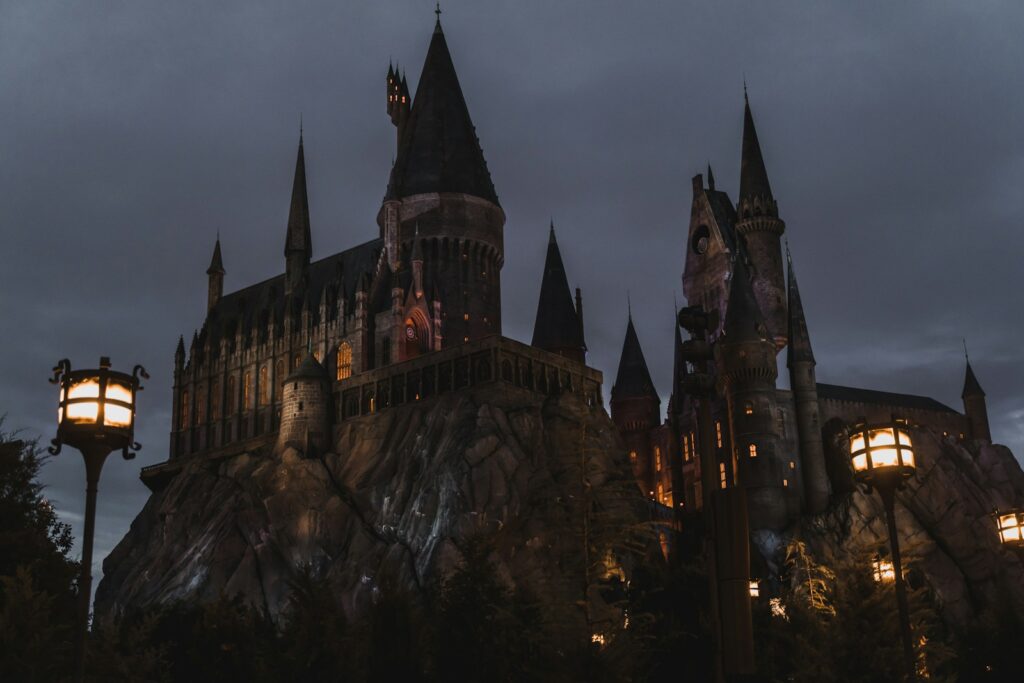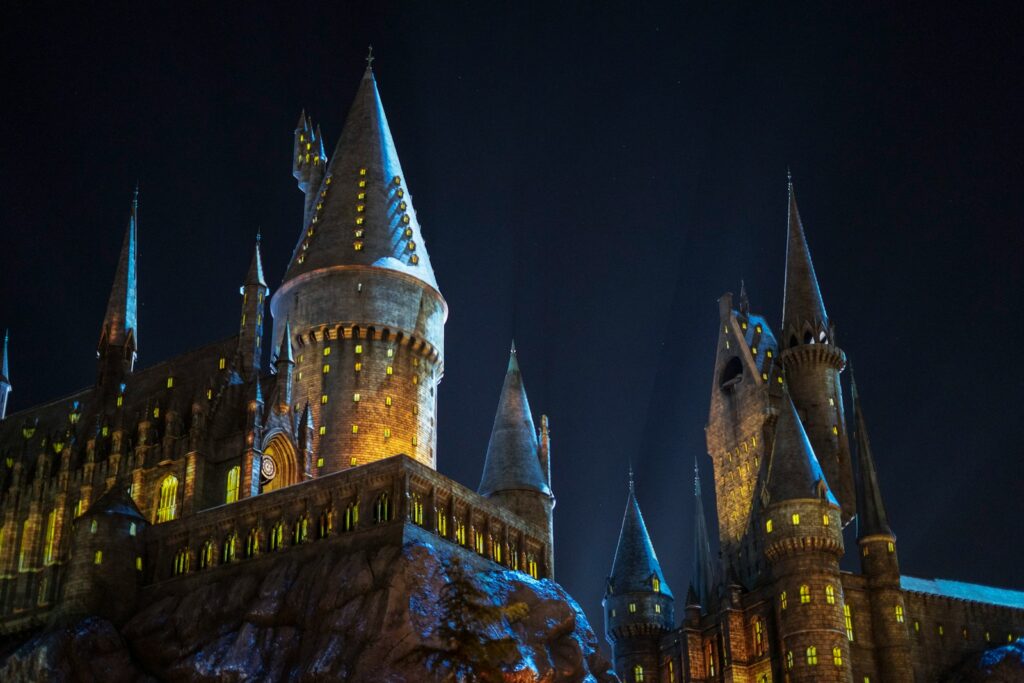
Stuart Craig, the esteemed production designer whose meticulous vision brought to life some of cinema’s most unforgettable worlds, from the fantastical grandeur of Hogwarts to the stark historical realities of “Gandhi” and “The English Patient,” died on Sunday at his home in Windsor, Britain. He was 83. The three-time Academy Award winner, widely recognized for his profound influence on the visual storytelling of the “Harry Potter” saga, had been battling Parkinson’s disease for an extended period, a struggle that was ultimately confirmed by his friend and fellow production designer, Neil Lamont. His passing marks the end of an extraordinary career that spanned more than five decades, leaving an indelible mark on the landscape of cinematic art.
Mr. Craig cultivated a reputation as one of the preeminent production designers of recent decades, a testament to his unparalleled skill in conjuring environments that were both breathtakingly imaginative and historically authentic. He was among a rare cohort of individuals who contributed to all eight original “Harry Potter” films, as well as their three “Fantastic Beasts” prequels, a remarkable 21-year commitment that shaped a beloved cultural phenomenon. Beyond the wizarding world, his work on grand-scale period films garnered critical acclaim and numerous accolades, demonstrating a versatility and depth that few in his field could match.
His passing has elicited an outpouring of tributes from across the film industry, reflecting the deep respect and affection he commanded. Colleagues remembered him not only for his immense talent but also for his grace, kindness, and humility. Through his innovative designs, which seamlessly blended historical precision with fantastical elements, Stuart Craig did more than just build sets; he crafted immersive experiences that transported audiences, allowing them to believe entirely in the worlds he meticulously created. We take an in-depth look at the foundational chapters of his remarkable career, examining the milestones that cemented his legacy as a true giant of film design.

1. **Early Foundations: The Genesis of a Design Master**Stuart Norman Craig was born on April 14, 1942, in Norwich, a city nestled northeast of London, England. By his own candid account, his early academic years were marked by an indifferent approach to traditional schooling. Yet, amidst this disinterest, a nascent passion for visual artistry began to bloom, finding its initial expression in the world of theatrical set design. He vividly recalled falling deeply in love with the craft after undertaking the task of painting scenery for a local production of “The Yeomen of the Guard,” a beloved comic opera by Gilbert and Sullivan.
This early, hands-on encounter with the transformative power of scenic art ignited a vocational calling. Pursuing this newfound dedication, Mr. Craig enrolled at the prestigious Royal College of Art in London, where he honed his skills and deepened his understanding of set design. Upon graduating in 1966, he swiftly transitioned into the professional film industry, immediately joining the crew of “Casino Royale,” a whimsical James Bond spoof that starred Peter Sellers. This initial foray into a major motion picture set the stage for a career defined by monumental achievements.
His early years in the industry during the 1970s were characterized by a diligent ascent through the ranks of apprenticeships. This period was crucial for Mr. Craig, providing him with invaluable on-the-job training and a comprehensive understanding of the intricate processes involved in film production design. Each role, from junior positions to more senior ones, contributed to the development of his signature style and meticulous approach, preparing him for the significant creative responsibilities that lay ahead.

2. **A Defining Arrival: From “Saturn 3” to “The Elephant Man”**Mr. Craig secured his inaugural role as a head production designer on the 1980 sci-fi thriller “Saturn 3,” a film featuring Farrah Fawcett and Kirk Douglas. While the movie itself garnered a less-than-enthusiastic reception, with critics reportedly “skewering” its overall execution, Mr. Craig’s contributions did not go unnoticed. His work on the film was deemed impressive enough to capture the attention of industry professionals, signaling the arrival of a distinctive new talent.
This early recognition proved pivotal, directly leading to his appointment as the top production designer for the critically acclaimed 1980 film, “The Elephant Man.” Directed by David Lynch, this poignant biographical drama, starring Anthony Hopkins and John Hurt, provided a stark contrast to his previous sci-fi endeavor. Here, Mr. Craig was tasked with meticulously recreating the somber and intricate world of late 19th-century London, a challenge he met with remarkable precision and artistry.
“The Elephant Man” proved to be Mr. Craig’s breakthrough, earning him his first Academy Award nomination and a BAFTA award, Britain’s equivalent of the Oscar, for his exceptional set design. This triumph not only validated his talents but also firmly established his reputation for an unparalleled ability to imbue cinematic spaces with a profound sense of period detail and emotional resonance, cementing his standing as a significant force in the world of film. It was the moment the industry truly recognized his unique genius for transforming a director’s vision into a tangible, believable world.

3. **The First Golden Statuette: Crafting the Grandeur of “Gandhi”**Following the critical success of “The Elephant Man,” Stuart Craig swiftly moved on to projects of even grander scale, culminating in his first momentous victory at the Academy Awards. In 1983, he proudly took home his inaugural Oscar for his exquisite set design work on the 1982 biographical drama “Gandhi.” This monumental film, which chronicled the life of the spiritual and political leader Mahatma Gandhi, played with remarkable depth by Ben Kingsley, presented a vast and complex canvas for Mr. Craig’s talents.
The film, a collaborative effort with director Richard Attenborough, required an ambitious recreation of India and South Africa during the first half of the 20th century. Mr. Craig’s keen eye for historical accuracy and his ability to manage such a sprawling production were critical to its success. He meticulously designed sets that transported audiences directly into the varied landscapes and cultural milieus of the era, from bustling cityscapes to serene ashrams, all while maintaining a visual authenticity that resonated deeply with viewers and critics alike.
Director Richard Attenborough, a frequent collaborator, held Mr. Craig’s work in the highest esteem, once stating to The New York Times in 1993, “I would postpone a film to use him. I really would. He has the most wonderful taste; there’s nothing that jars.” This profound endorsement underscored Mr. Craig’s reputation for not only his exceptional talent but also his unwavering commitment to creating environments that were both visually stunning and impeccably true to their historical context, a hallmark of his distinguished career.

4. **Eighteenth-Century Elegance: The Artistry Behind “Dangerous Liaisons”**Stuart Craig’s exceptional command of historical periods continued to earn him widespread acclaim, leading to his second Academy Award win for the 1988 film “Dangerous Liaisons.” This elegant drama, a tale of intrigue and seduction set in 18th-century France, provided a rich tapestry for Mr. Craig to weave his production design magic. The film, starring Glenn Close, John Malkovich, and Michelle Pfeiffer, demanded an exquisite portrayal of aristocratic opulence and refined decadence, a challenge Mr. Craig met with his characteristic precision and flair.
His design for “Dangerous Liaisons” was a masterclass in capturing the nuanced aesthetic of the period, from the intricate detailing of rococo interiors to the grandeur of French châteaux. Every element, from the texture of the tapestries to the ornate furniture and the ambient lighting, was carefully curated to immerse the audience in a world of both beauty and treachery. This meticulous approach underscored his ability to create environments that were not merely backdrops but integral components of the narrative, enhancing the psychological depth of the characters and their complex relationships.
The Oscar win for “Dangerous Liaisons” further solidified Mr. Craig’s reputation as a designer capable of handling broad thematic and visual landscapes with an extraordinary focus on period detail. It showcased his versatility beyond the sweeping historical epics like “Gandhi,” demonstrating his equal proficiency in crafting the intimate, yet grand, settings required for a chamber drama of such emotional intensity. His ability to evoke the essence of an era, making it feel both historically accurate and vibrantly alive, was truly a defining characteristic of his illustrious career.

5. **Vistas of War and Romance: “The English Patient” and a Third Oscar**Stuart Craig’s remarkable ability to translate diverse historical settings into compelling cinematic realities was once again recognized with his third Academy Award win for the 1996 epic romance, “The English Patient.” This critically acclaimed film, starring Ralph Fiennes and Juliette Binoche, transported audiences to the evocative landscapes of Tuscany and the stark, vast deserts of North Africa during World War II, a dramatic canvas that demanded both authenticity and breathtaking visual poetry from its production design.
For “The English Patient,” Mr. Craig meticulously crafted environments that were integral to the film’s sweeping narrative of love, loss, and memory. His designs evoked the raw beauty of war-torn Italy and the desolate grandeur of the Sahara, capturing the essence of both intimate human emotions and the immense historical forces at play. The sets, whether a crumbling monastery or an expedition tent amidst the dunes, spoke volumes, serving as silent witnesses to the characters’ profound journeys and harrowing experiences.
It was during the production of “The English Patient” that Mr. Craig first collaborated with Neil Lamont, who would later become a close friend and mentee. Lamont vividly recalled their initial meeting in Tunis, describing flying there as “one of the most important days of my career.” His account of that first reconnaissance, nervous amidst a derelict building in 40-degree heat, offered an early glimpse into Craig’s demanding yet inspiring process. Lamont lauded Craig’s “beautiful sketches, pencil drawings and vision,” and highlighted “the way which he conducted himself in all walks of life, in the studio, the car, restaurants. A true gentleman, with grace, kindness and humility,” even at this early stage of their professional relationship.

6. **Conjuring Hogwarts: The Daunting Task of “Harry Potter and the Sorcerer’s Stone”**In 1999, Stuart Craig received a pivotal call that would forever intertwine his legacy with one of the most beloved literary and cinematic franchises of all time. While he was engaged in the domestic task of setting up a nursery for one of his grandchildren, director Christopher Columbus reached out, extending an invitation to work on the first Harry Potter film, “Harry Potter and the Sorcerer’s Stone.” This offer marked the beginning of an unprecedented creative undertaking, one that would redefine his career and enthrall millions worldwide.
Remarkably, Mr. Craig had not yet read J.K. Rowling’s burgeoning literary sensation. He remedied this on the flight from London to Los Angeles, where Mr. Columbus was based, devouring the book and immersing himself in its magical universe. His initial reaction to the immense scope of the project was candidly one of “fright: How the hell are we going to do this?” The challenge was colossal: translating a world of intricate magic and vivid imagination, previously existing only in the minds of readers, into tangible cinematic reality.
His greatest immediate challenge, and ultimately his greatest eventual success, lay in constructing an enormous, antiquated world steeped in magic without inadvertently suffocating the modern sensibility of its teenage characters. This delicate balance was crucial. Mr. Craig understood that the visual language of Hogwarts and beyond needed to feel both ancient and lived-in, magical yet relatable to a contemporary audience. His genius would be in bridging this imaginative chasm, giving physical form to the fantastical without losing its essence.

7. **An Evolving Magical Canvas: Building the Expansive Potter Universe**Stuart Craig’s involvement with the Harry Potter series was nothing short of monumental. He served as the production designer for all eight films in the original franchise, beginning with “Sorcerer’s Stone” in 2001 and concluding with “Deathly Hallows: Part 2” in 2011. This sustained commitment allowed him to oversee the organic evolution of the wizarding world, an environment that grew exponentially in complexity and scale with each subsequent installment.
The films were primarily shot at Leavesden Studios outside London, a location that became synonymous with the creation of the magical realm. Mr. Craig recognized that the Harry Potter universe was profoundly rooted in the sensibilities of Britain itself, a place where “centuries-old cathedrals and halls rub shoulders with contemporary shops and fashion.” This observation became a cornerstone of his design philosophy for the series, allowing him to authentically blend disparate eras.
He articulated this dynamic approach to Wide Screen journal in 2010, noting, “It’s the most wonderful mix in that they wear jeans and T shirts, use ’50s technology, live in 13th-, 14th-, 15th-century surroundings, and we are deliberately exploiting those different influences and letting periods clash together in an energetic, dynamic way.” As the narrative expanded, so too did the physical scope of his designs, encompassing iconic locations far beyond the familiar confines of Hogwarts School of Witchcraft and Wizardry, such as the sprawling and imposing Ministry of Magic headquarters, conceptually buried beneath central London. His team adeptly integrated the expanding capabilities of computer-generated imagery, treating digital environments with the same meticulous design process as physical sets, ensuring every detail was carefully conceived and executed.

8. **Expanding the Wizarding World: The “Fantastic Beasts” Saga**Stuart Craig’s profound engagement with the wizarding world extended well beyond the original eight “Harry Potter” films. He dedicated an additional period to shaping the visual landscape of the three prequel films in the “Fantastic Beasts” series, beginning with “Fantastic Beasts and Where to Find Them” in 2016, continuing with “The Crimes of Grindelwald” in 2018, and concluding with “The Secrets of Dumbledore” in 2022. This unbroken commitment represented an extraordinary 21-year run, making him one of the few individuals whose artistic vision spanned the entirety of this expansive cinematic universe. It was a testament to his enduring creative energy and his unparalleled ability to maintain visual consistency across decades of fictional storytelling.
His work on the “Fantastic Beasts” franchise presented a unique set of challenges, requiring him to conceptualize a visually distinct yet inherently connected era within the same magical universe. The narratives, set decades before Harry Potter’s time, demanded a fresh aesthetic that still resonated with the established visual grammar of Hogwarts and its surrounding world. Mr. Craig meticulously designed these new environments, ensuring they felt both historically appropriate for the early 20th century and authentically magical, further solidifying the immersive quality of J.K. Rowling’s literary creation.
Even as the capabilities of computer-generated imagery continued to advance, Mr. Craig and his team embraced these technological evolutions, treating digital environments with the same rigorous design principles as physical sets. He articulated his approach to Wide Screen journal, stating, “We treat that just as we would a real set: We design it and draw it, do working construction drawings of it and give that to visual effects, and they then construct it digitally.” This seamless integration of traditional artistry with modern technology allowed for the creation of increasingly complex and breathtaking magical locales.

9. **The Wizarding World of Harry Potter: Theme Park Immersion**Stuart Craig’s visionary work transcended the silver screen, directly influencing the physical, interactive experiences of millions. At the specific request of J.K. Rowling, the author of the Harry Potter books, Universal Studios brought Mr. Craig on board to design The Wizarding World of Harry Potter at its resort in Orlando, Florida. This monumental undertaking involved translating his meticulously crafted cinematic environments into fully immersive theme park attractions, a testament to the profound impact and tangibility of his designs.
The Orlando attraction was thoughtfully divided between Universal’s two theme parks, seamlessly connected by a Hogwarts Express ride, itself a physical manifestation of his design prowess. Mr. Craig’s involvement ensured that every detail, from the cobbled streets of Hogsmeade to the majestic grandeur of Hogwarts Castle, faithfully mirrored the visual style established in the films. His direct supervision guaranteed an authentic experience, allowing visitors to step directly into the magical world he had so carefully constructed for the cinema.
Beyond Orlando, his influential designs formed the basis for similar Universal theme park attractions in Hollywood, Osaka, and Singapore. These global expansions of The Wizarding World of Harry Potter stand as enduring monuments to Mr. Craig’s singular talent. They underscore his extraordinary ability to not only create compelling cinematic spaces but also to envision and realize them in a way that resonated deeply enough to inspire real-world, interactive environments, further cementing the wizarding world’s place in popular culture.

10. **Beyond the Grandeur: Craig’s Diverse Filmography**While Stuart Craig is widely celebrated for his contributions to historical epics and the fantastical realm of Harry Potter, his extensive filmography showcases a remarkable versatility and a keen eye for detail across a diverse range of genres and scales. His career was punctuated by significant projects that, while perhaps not garnering the same three Academy Awards as his most famous works, nonetheless bore his distinctive artistic signature and contributed to his reputation as a master craftsman in production design.
Among his notable credits are films such as “Greystoke: The Legend of Tarzan, Lord of the Apes” (1984), where he crafted the lush, untamed environments of the jungle and the contrasting opulence of Victorian England. He also lent his talents to “The Mission” (1986), a powerful drama set in 18th-century South America, and “Cry Freedom” (1987), which depicted the stark realities of apartheid South Africa, both showcasing his ability to evoke complex political and social landscapes with visual precision.
Mr. Craig’s range extended even to more intimate narratives and contemporary settings. He worked on “Chaplin,” “The Secret Garden” (1993), and the beloved romantic comedy “Notting Hill.” However, he often cited the film adaptation of the play “Shadowlands” (1993), about the writer C.S. Lewis, as his favorite project. For “Shadowlands,” he found particular satisfaction in the meticulous attention to detail required, once telling Sight and Sound in 2005, “We were able to achieve a degree of detail and finish — I hesitate to say perfection — in such small objects as C.S. Lewis’s cup, pipe, pipe rack, slippers, each of which we had time to consider in great detail.” This illustrates his profound dedication to authenticity, whether on a grand scale or in the quiet intimacy of a character’s personal space.

11. **The Meticulous Eye: Craig’s Design Philosophy**At the core of Stuart Craig’s enduring success was a distinctive design philosophy characterized by meticulous research, an imaginative blend of historical and contemporary elements, and an unwavering commitment to authenticity. He possessed an uncanny ability to create environments that were not merely backdrops but living, breathing components of the narrative, enhancing character and plot with subtle visual cues. This approach was particularly evident in his work on the Harry Potter series, where he seamlessly married centuries-old architecture with modern sensibilities.
He recognized that the Harry Potter universe was profoundly rooted in the sensibilities of Britain itself, a place where “centuries-old cathedrals and halls rub shoulders with contemporary shops and fashion.” This observation became a cornerstone of his design philosophy for the series, allowing him to authentically blend disparate eras. He explained this dynamic approach, noting, “It’s the most wonderful mix in that they wear jeans and T shirts, use ’50s technology, live in 13th-, 14th-, 15th-century surroundings, and we are deliberately exploiting those different influences and letting periods clash together in an energetic, dynamic way.” This innovative method prevented the magical world from feeling stagnant or anachronistic, instead imbuing it with a vibrant, lived-in quality.
Furthermore, Mr. Craig’s dedication to detail extended to every aspect of production, including the then-expanding capabilities of computer-generated imagery. He insisted that digital environments be afforded the same rigorous design process as physical sets, ensuring they were fully conceived and integrated into the overall aesthetic. Whether designing the sprawling Ministry of Magic or the intimate details of C.S. Lewis’s study, his goal was always to construct believable, immersive worlds, making every object and every space contribute meaningfully to the story. It was this holistic and exacting approach that made his cinematic worlds feel so utterly real.

12. **Enduring Collaborations and Mentorship**Stuart Craig’s illustrious career was also defined by his significant and lasting collaborations, many of which evolved into deep professional and personal relationships. His ability to foster talent and inspire loyalty was a hallmark of his gentle demeanor and profound expertise. A prime example is his enduring partnership with set decorator Stephenie McMillan, with whom he collaborated on all eight original Harry Potter films, forming a formidable creative duo that consistently delivered breathtaking visual designs.
His mentorship profoundly impacted colleagues such as Neil Lamont, who would become a close friend and fellow production designer. Mr. Lamont vividly recalled their initial encounter during the production of “The English Patient” in Tunis, an experience he described as “one of the most important days of my career.” Despite a nerve-wracking start in 40-degree heat, Mr. Lamont quickly recognized Craig’s immense talent: “The experiences I had on this film, not only allowed me to see Stuart’s talent, his beautiful sketches, pencil drawings and vision, but also the way which he conducted himself in all walks of life, in the studio, the car, restaurants. A true gentleman, with grace, kindness and humility.”
Another significant collaborator was director Richard Attenborough, with whom Mr. Craig worked on pivotal films like “Gandhi” and “Cry Freedom.” Attenborough held Craig’s artistic judgment in such high regard that he once told The New York Times in 1993, “I would postpone a film to use him. I really would. He has the most wonderful taste; there’s nothing that jars.” Such profound endorsements speak volumes about Mr. Craig’s consistent excellence and the trust he inspired in those with whom he shared his creative journey.
Read more about: JD Souther: Remembering the Master Songwriter Who Shaped ’70s Country-Rock and Beyond

13. **A Legacy of Kindness and Humility: Tributes from Colleagues**The news of Stuart Craig’s passing elicited a powerful wave of tributes from across the film industry, highlighting not only his monumental artistic contributions but also his profound personal qualities. Neil Lamont, his friend and mentee, encapsulated the widespread sentiment, remembering him as “A true gentleman, with grace, kindness and humility.” Mr. Lamont further emphasized Craig’s generosity, noting, “Stuart was very generous with his time and advice, always taking the time to share his knowledge and support those around him.” He posited that if one were to ask any designer whom they would most like to work with, “the answer 100% would be Stuart Craig.”
David Heyman, the producer of the Harry Potter films, added his voice to the chorus of appreciation, declaring, “Stuart Craig was one of the greatest production designers to work in film.” Beyond his technical prowess, Heyman recognized Craig’s character, describing him as “the kindest, most generous and supportive man.” He praised Craig’s “exquisite taste and a wonderful sense of story,” alongside his “extraordinary ability to bring out the very best in everyone around him.”
Similarly, David Yates, who directed the final four Harry Potter installments, offered a heartfelt remembrance: “Stuart was a dear friend and colleague: he was a giant in our industry, graceful, talented, stubborn and always nurturing and supporting emerging design talent.” These testimonies paint a vivid portrait of a man who was not only a peerless artist but also a humble, kind, and inspiring presence to those fortunate enough to collaborate with him. His impact extended far beyond the visual elements of film, shaping careers and leaving an indelible mark on the lives of his colleagues.

14. **Family’s Fond Farewell and Lasting Impact**Stuart Craig is survived by his beloved wife, Patricia Stangroom, with whom he shared a marriage since 1966. Their daughters, Laura and Becky, and four grandchildren also carry forward his legacy. The profound impact of his life, both personal and professional, was eloquently articulated in a statement from his family following his passing. They shared, “Our beloved husband and father, deeply loved and respected, was not only known for his talent but also for his kindness and we are moved by hearing of how many lives he touched. He will live on in our hearts forever.” This tribute underscores the deep affection and admiration he commanded from those closest to him.
His passing marks the conclusion of an extraordinary career that spanned over five decades, fundamentally shaping the visual narratives of some of cinema’s most iconic productions. From the gritty realism of 19th-century London in “The Elephant Man” to the sweeping historical tapestries of “Gandhi” and “The English Patient,” and ultimately to the immersive fantasy of the Wizarding World, Mr. Craig’s designs were consistently imbued with a profound sense of place and purpose. His three Academy Awards and numerous other accolades stand as testament to his unparalleled artistic achievements and his consistent dedication to excellence in production design.
Read more about: Pat Carroll: A Storied Life, The Unforgettable Voice of Ursula, and a Legacy of Laughter
Stuart Craig’s contribution to film transcends mere set decoration; he built worlds that audiences could inhabit, believe in, and cherish. His meticulous vision, his ability to blend the fantastical with the historically authentic, and his innate kindness have ensured that his legacy will continue to enchant and inspire for generations to come, firmly establishing him as an irreplaceable giant in the annals of cinematic art. His work is not merely seen; it is experienced, a testament to a master who made the impossible seem real.


